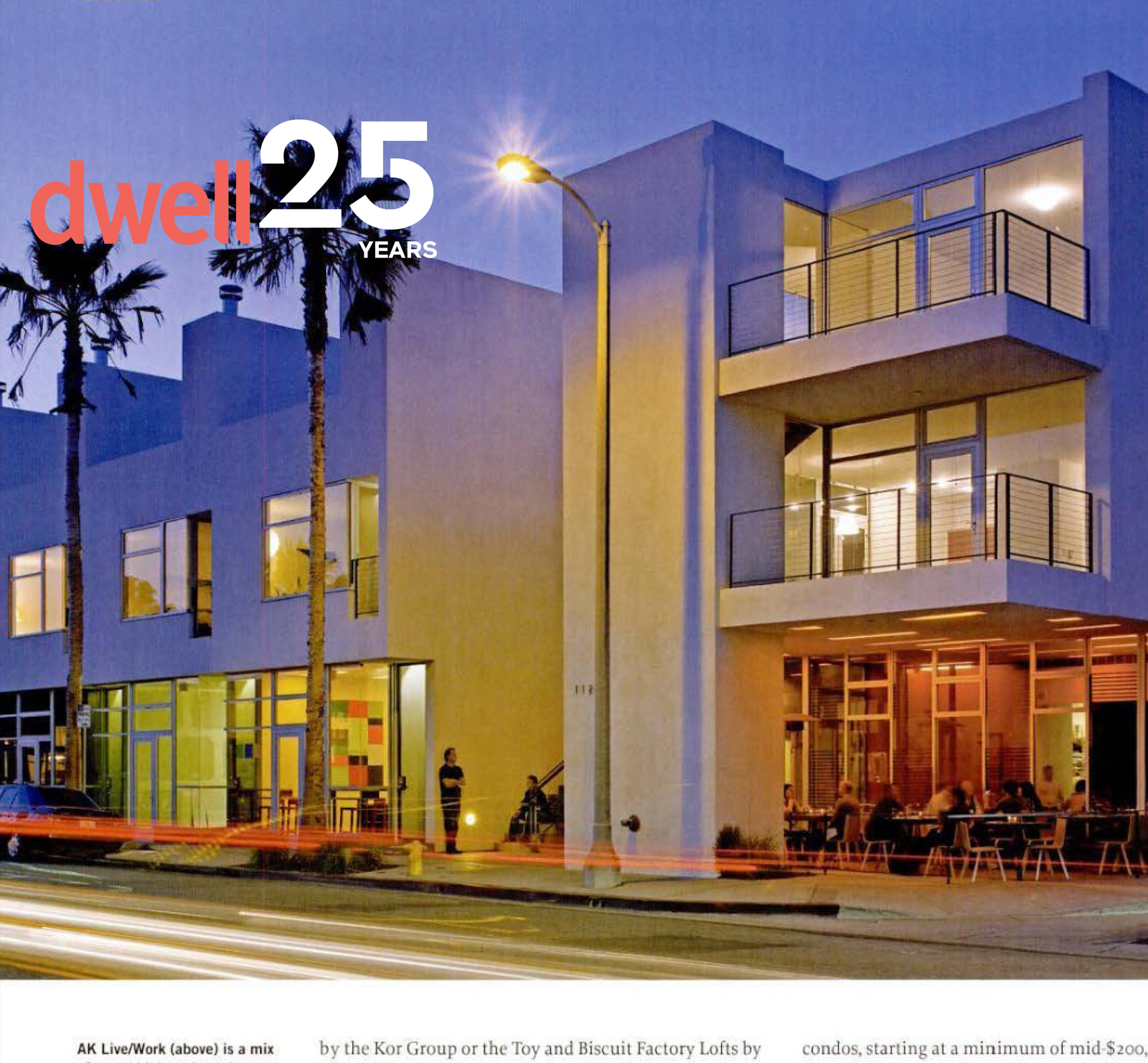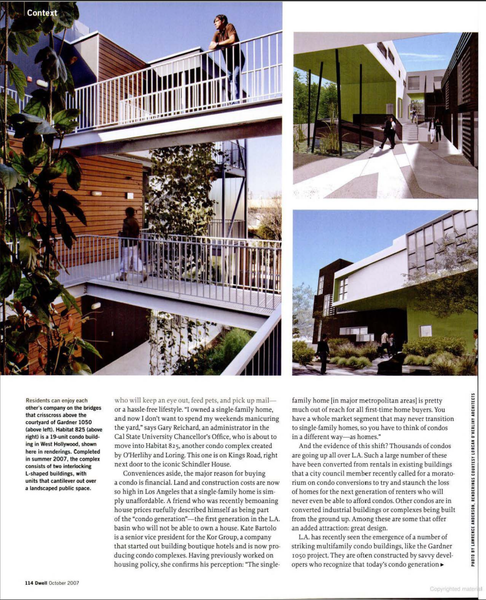By 2007, the single-family home was already out of reach for most buyers. As such, thousands of condominiums went up in Los Angeles, transforming the city from sprawling and horizontal to higher and denser.

As a part of our 25th-anniversary celebration, we’re republishing formative magazine stories from before our website launched. This story previously appeared in Dwell’s October 2007 issue.
Stan Bochniak was raised in the planned suburban middle-class community of Thousand Oaks, located 30 miles northwest of Los Angeles. This was quintessential postwar Southern California living: a single-family tract home with a large yard, a two-car garage, and a short drive to the nearest store. “It was meant to be neighborly,” he says, “but it was actually very isolating.” So when he bought a home recently, Bochniak, a regional manager for a parking management company, chose the opposite: a condo in the heart of busy, walkable West Hollywood. It is a home, he says, where residents meet in the common courtyard: “Sometimes you are standing on the catwalk on the top level and talking to a person on the lower one, and everybody’s door faces each other.”
Bochniak’s condo is in a complex of 1o units on West Hollywood’s Gardner Avenue, designed in a distinctly modern spirit by Lorcan O’Herlihy for the boutique developer Richard Loring and his company, Habitat Group. “I love the aesthetic of the design,” says Bochniak. “It’s not just a cheesy, cookie-cutter Spanish-style knockoff.” The units range from 1,200 to 1,700 square feet and feature flowing, unfussy interior spaces with 10-foot ceilings. They also have 120-square-foot balconies and double layers of drywall to enhance acoustic separation, and share a striking exterior of rain wood screen over VaproShield waterproofing with an outside stairwell encased in Profilit glass. “Quite frankly,” says Bochniak, “for what I paid for the place I could have gone to the Valley and bought a house with a pool, but I didn’t want that. Part of the reason our generation moves here is because they crave the interaction.”

Photo by Lawrence Anderson
Bochniak is one of thousands in L.A. who are now buying condos in multifamily complexes instead of single-family homes, and contributing, sale by sale, to a major change in the urban form and identity of Los Angeles—from sprawling and horizontal to higher and denser.
For some, like Bochniak, the reason is social. For others it is about security—those who travel have neighbors who will keep an eye out, feed pets, and pick up mail—or a hassle-free lifestyle. “I owned a single-family home, and now I don’t want to spend my weekends manicuring the yard,” says Gary Reichard, an administrator in the Cal State University Chancellor’s Office, who is about to move into Habitat 825, another condo complex created by O’Herlihy and Loring. This one is on Kings Road, right next door to the iconic Schindler House.

Photo by Lawrence Anderson, Renderings courtesy Lorcan O’Herlihy Architects
Conveniences aside, the major reason for buying a condo is financial. Land and construction costs are now so high in Los Angeles that a single-family home is simply unaffordable. A friend who was recently bemoaning house prices ruefully described himself as being part of the “condo generation”—the first generation in the L.A. basin who will not be able to own a house. Kate Bartolo is a senior vice president for the Kor Group, a company that started out building boutique hotels and is now producing condo complexes. Having previously worked on housing policy, she confirms his perception: “The single-family home [in major metropolitan areas] is pretty much out of reach for all first-time homebuyers. You have a whole market segment that may never transition to single-family homes, so you have to think of condos in a different way—as homes.”
And the evidence of this shift? Thousands of condos are going up all over L.A. Such a large number of these have been converted from rentals in existing buildings that a city council member recently called for a moratorium on condo conversions to try and staunch the loss of homes for the next generation of renters who will never even be able to afford condos. Other condos are in converted industrial buildings or complexes being built from the ground up. Among these are some that offer an added attraction: great design.

Photo and rendering courtesy Pugh+Scarpa Architecture
See the full story on Dwell.com: From the Archive: The Condo Generation

